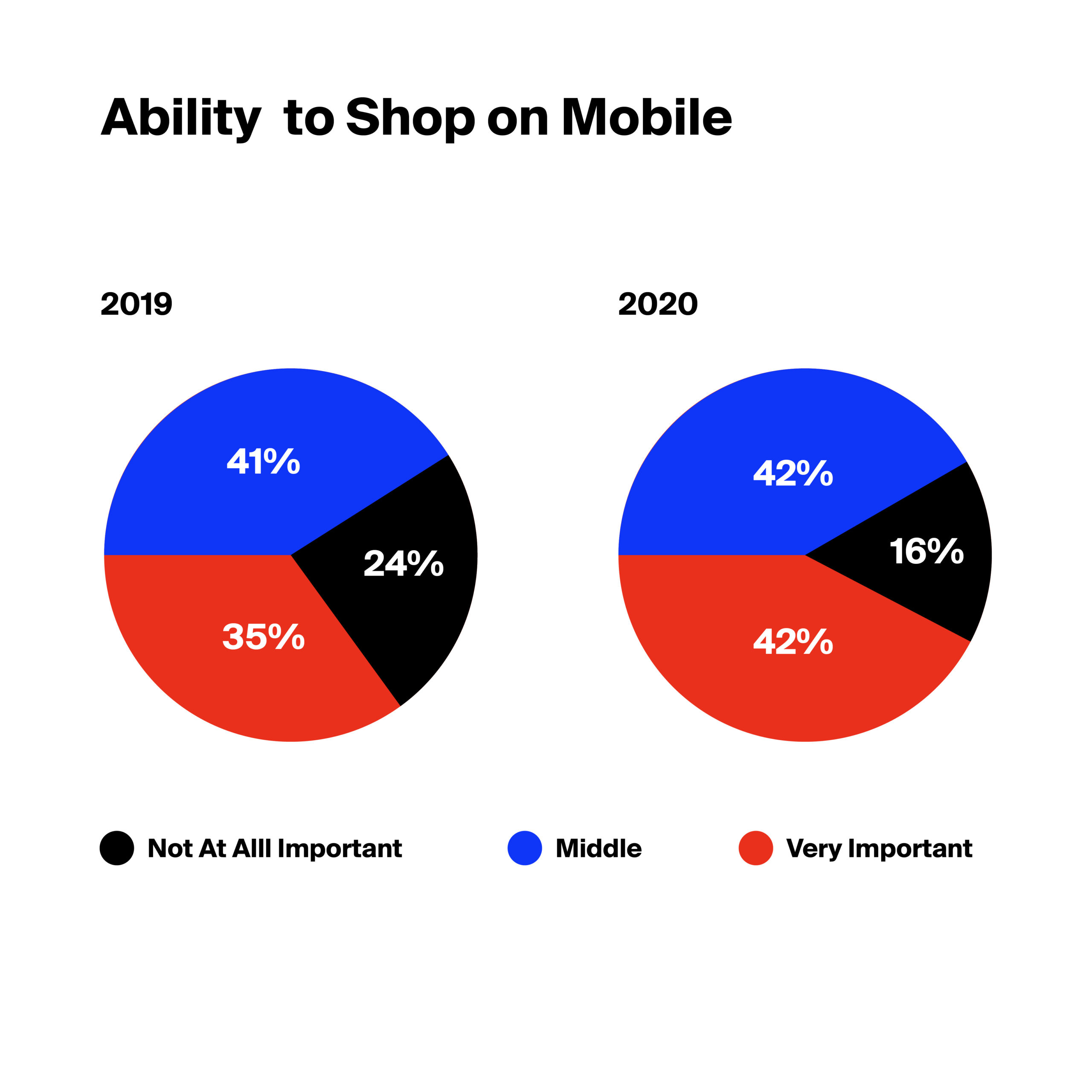For many Americans, Labor Day Weekend is the last hurrah of summer. For growth marketers, LDW is the last hurrah before holiday planning ramps up. The 100-day marker before Christmas is September 16, and it’s crucial that your strategic planning for the 2021 holiday season begins around this time.
According to the National Retail Federation, consumers purchased $529 billion worth of goods during the 2010 holiday season. Throughout the 2010s, this value grew at a steady rate of +4.2% per year until 2020 when online shopping surged by +32% to $789 billion which was likely caused by the COVID-19 pandemic. This year, Insider Intelligence is predicting the US 2021 holiday shopping season will reach $1 trillion.
With so much on the line, it’s important to follow our 9 growth tactics to ensure your brand achieves its revenue goals this holiday season.
Growth Tactic #1: Start Early
Though the 2021 holiday season doesn’t technically start until Black Friday, the 4th Friday in November, many marketers launch holiday campaigns as early as 11/1. With that said, marketers need to be strategic about how they’ll position their brand. One of their biggest hurdles will be differentiating their product in the noisy, crowded environment we call the ‘joyful holiday season’.
To ensure success, holiday planners should begin brainstorming their omnichannel approach in late August. In September, the goal is to iron out messaging and creative direction before the holistic plan is finalized in October. Depending on the size of your brand, your audience, and your EOY goals, we recommend launching your campaigns in early to mid-November.
In fact, LocalIQ ran a research project based on the 2020 holiday season and concluded that 56% of shoppers want to complete their holiday shopping by the end of November. Therefore, the key to success will be getting into your consumer’s pockets early before they’re exhausted by the overwhelming volume of holiday advertising.

Growth Tactic #2: Build a Holiday Calendar
This one might seem obvious, but many marketers overlook it. We suggest building a holiday campaign calendar to visualize your holiday plan across marketing channels. Establishing firm launch dates will help guide your team through the chaos and hecticness of September through December. It also establishes accountability among channel leaders.
Be ready to react and adapt quickly. Make sure you are properly staffed for the 2021 holiday season to avoid burnout and stretching your team too thin. We encourage our team to submit vacation requests by mid-October so we can plan accordingly, and we recommend your company does the same.
Growth Tactic #3: Leverage Data and Research to Your Advantage
During the planning period, give yourself adequate time to build a solid strategic foundation. Begin by analyzing prior data and identifying new areas of opportunity. Next, perform industry and competitor research so that you’re informed and up-to-date with this year’s trends. Based on your findings, identify tangible EOY goals for your brand.
Take time to get your ducks in a row. If time and budget allow, test new strategies on a smaller scale and analyze the results. Spend as much time as possible gathering performance learnings so that you can hit the ground running in November.
We use the following strategies in our pre-holiday planning period.
Review last year’s performance: What worked and what didn’t? Make sure to look for:
- Top-performing offers (Make sure to get finance’s buy-in. Review margin and CAC on these offers)
- Best performing products, bundles, or holiday gifts
- Winning subject lines and email cadence
- Top campaigns and audience segmentation
- Top performing creative
- Best performing customers (don’t forget about them)
See what worked (and didn’t work) for competition. Review public case studies from the last year for both direct and in-direct competitors. Take a dive into your bookmarks and slack channels – does anything stand out? Make sure to answer the following questions:
- Can you identify successful themes across brands?
- How can you take existing “inspo” assets to the next level?
- Are these strategies in line with your brand goals?
- How can you modify other brand’s emails or offers to fit your brand?
- Is it tangible to replicate these tactics for your brand?
- Which trends should be left in the past and which ones should be reinvented for 2021?
After you’ve completed this research, align on budget and goals and identify benchmarks based on last year’s performance.
Growth Tactic #4: Consider Your Logistical Constraints
The goal in the early planning phase is to understand what is logistically possible for your supply chain and fulfillment centers. No matter the size of your company, the supply chain should always be considered when developing a marketing plan.
First, synchronize with your product fulfillment teams in August or September to understand their bandwidth and potential limitations during the holiday season. If you’re planning to roll out special holiday packaging (i.e. holiday prints or stickers), discuss the timeline, cost, and establish expectations with your team. If you already have new holiday packages in the works, get a status update.
Many marketers advertise the last purchase date that will guarantee product delivery by 12/24, Christmas Eve, which is a powerful impulse buying tactic. If you’d like to leverage this strategy, work with your fulfillment team to identify this date. Then, select a date that’s 1-2 days in advance of the final deadline and advertise that date to customers. This way, you’ve given yourself a time cushion and you can avoid accumulating unnecessary angry customers.
Growth Tactic #5: Develop Top-Notch Creative Assets
After you’ve completed preliminary research and aligned on goals, budgets, and logistical limitations, it’s time to shift gears into a creative mindset. We recommend tackling the creative needs early because production takes time. Rushing the creative process will leave you with poorly designed and manufactured assets that can be detrimental to your holiday campaigns.
After you’ve decided on a central theme and identified a winning offer, consider how this can be tweaked for various marketing channels. Media that works for paid Facebook and Instagram campaigns won’t necessarily work for YouTube, TikTok, and Display.
Growth Tactic #6: Review Your Conversion Journey
Consider this question: On average, how many days does it take users to make a purchase on your website? Most brands fall somewhere within 30 days, but it’s not uncommon to see larger numbers for higher-priced and/or luxury products. If you’re not satisfied with your brand’s conversion journey, get to work sooner rather than later so you can get ahead of your technical debts.
Analyze user behavior on your website to identify potential UX and CRO issues. Prioritize core landing pages that receive the highest traffic and visibility instead of blog posts and other pages that are more difficult to find on the website. Get aligned with your development team on an acceptable timeline and ensure the plan can be implemented before the holiday season begins in early November. Identify what it takes to create a frictionless conversion journey for customers and take action to improve your website’s weaknesses so you can ensure optimal holiday campaign performance.

Growth Tactic #7: Tackle SEO, Tagging, and Reporting Issues Early
During the holiday season, product and brand searches spike, which ultimately means increased competition for your organic rankings. It’s imperative to be both strategic and realistic about your SEO goals. Our biggest recommendation is to ensure your top organic ranking pages match the user’s search intent. Once you accomplish this, you’ll likely see higher conversion rates because you’ll be giving users exactly what they’re aiming to get from their organic search.
It’s also important to consider technical errors on your website. And yes, every website has these demons. Although tagging or reporting issues might not be the most glamorous items to address, knocking them out of the way ahead of the holiday season will pay off. Once completed, you can relax knowing that you’re getting the cleanest data possible. This will lead to valuable data findings, performance learnings, and insights that will guide your strategic optimizations throughout the season.
Growth Tactic #8: Use PR, Affiliate and Influencers When It Makes Sense
Public Relations: Leveraging good PR in your performance campaigns can be highly impactful when executed successfully. PR pitching isn’t a quick process and is heavily dependent on relationships, so align with your PR team in August or September to make sure they are focused on the right offers and holiday products. The goal is to achieve PR validation in October or November before the holiday season.
Affiliate Marketing: Don’t miss out on this opportunity. There are a million lists that circulate during the holiday season that tell customers exactly what to buy and who they should buy it for (i.e. mom, brother, girlfriend). Identify the right strategy and placement for your brand, and execute accordingly. This can be a highly impactful marketing strategy during the holiday season.
Influencer Marketing: Like the rest of us, influencers get busy during the holiday season and book up early. Strategize on the qualities your ideal influencer might possess, then find influencers that align with your wish list. It’s important that your chosen influencers are aligned with your brand values because they will be viewed as a representative of the company. Being proactive is key, so get on their list early.
Growth Tactic #9: Combine Learnings to Make a Stellar Media Mix
It’s time to put everything together and begin campaign planning. Consider your strongest and weakest channels from a revenue perspective. The most effective way to organize your campaigns is to refer back to the marketing funnel. Keep campaigns organized in your EOY holiday calendar and find cross-channel opportunities to encourage sales.
Let’s be clear — once your campaigns go live, the time for rapid experimentation has come and gone. Your efforts should be focused on making small campaign tweaks to ensure your campaigns are continually optimized for success.

For Top of Funnel marketing campaigns, the goal will always be brand awareness. Though these campaigns aren’t directly correlated to the holidays, it’s important you keep them running. This structure looks different for every channel. For robust channels like SEM and Paid Social, this might be a click or landing pageview-centric campaign. Two great opening channels are Google Display and YouTube because they have a wide reach and are consistently successful at generating a high volume of clicks in a relatively short time period. As previously mentioned, PR is also a great option for TOF because it builds brand accreditation and recognition.
Now that you’ve sparked people’s interest, leverage Middle of Funnel campaigns to build a positive brand perception in the minds of your target audience. Leverage channels like email marketing, SMS/push notifications, and social media to continue building trust with users. By nature, people who are ‘following’ you in some capacity have a medium level of intent in your brand. Therefore, utilize these channels to announce new product offerings, holiday deals, and other promotions through these channels. Examples might include a weekly email newsletter that highlights your special holiday deals, an SMS reminder to buy before XX/XX date to receive before Christmas, or an organic post on Instagram that features a customer testimonial for one of your best-selling products.
Finally, we’ve arrived at the Bottom of Funnel where customers not only know about your brand, but they actually like your brand and are heavily considering a purchase. Most of the channels we’ve mentioned can also function as effective closing channels, but it’s all about the targeting and the messaging. Copy should not only be actionable, but it should also show the customer how your product can serve as a solution to their problem. Finally, win over customers with testimonials and close the deal.
Conclusion
Success looks different for all brands based on their industry, age, reputation, and growth team. Executing a successful 2021 holiday season is much easier said than done, but thoughtful planning and research can make a world of difference. If the holiday season performs according to Insider Intelligence’s 2021 projections of $1 trillion in retail spend, you’ll need these 9 growth tactics in order to turn a profit.






